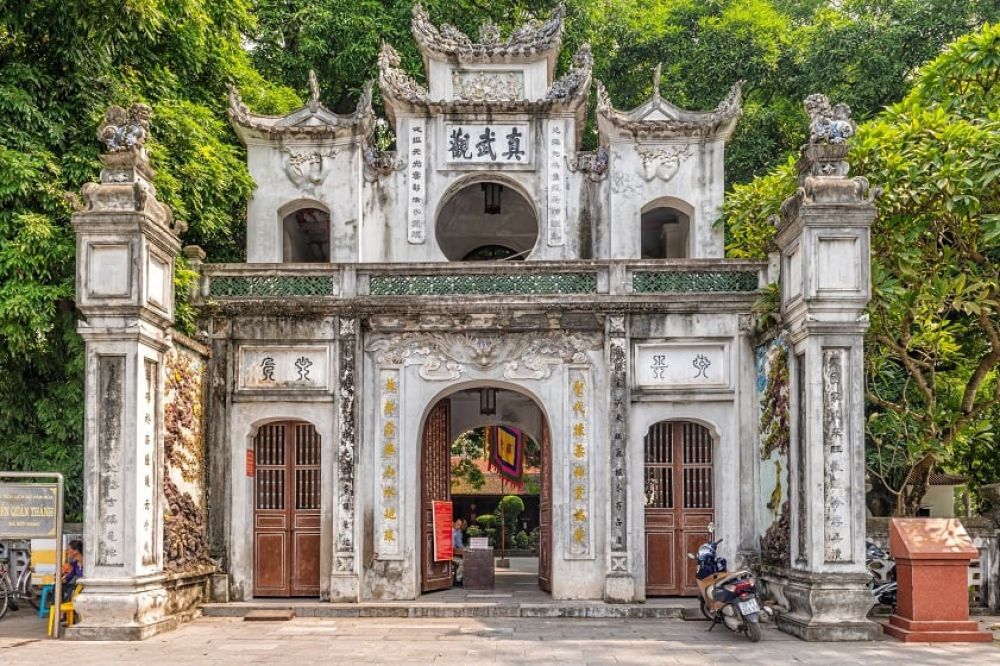

Quan Thanh Temple, located in the bustling city of Hanoi, Vietnam, is one of the ancient architectural monuments that draw tourists from around the world. This Taoist temple was first constructed during the reign of Emperor Ly Thai To, founder of the Ly Dynasty, which lasted from the 11th to the 12th centuries.
The temple was established to honor Huyen Thien Tran Vu, a principal Taoist god, who is a symbol of north direction and also considered a protector of the nation. Its original purpose was both spiritual and martial, serving to protect the capital from malevolent spirits and also as an observation point against northern invasions.
Featuring a grand gate, a beautifully crafted courtyard, and an impressive altar, the temple is an outstanding example of the traditional Vietnamese architecture that has been well-preserved through several dynasties and renovations. Its famous bronze statue of Tran Vu which dates back to the 1677 is deemed to be one of the most significant bronze statues in Vietnam.
Tourism at Quan Thanh Temple has developed alongside the growth of Hanoi's tourism sector. As tourists began exploring Vietnam more widely, post-Vietnam War, the temple has become a popular site for both international visitors and local devotees. Due to its cultural significance, the temple is frequently visited during the Lunar New Year and other traditional festivals, where it plays a key role in the spiritual life of the people.
The modern-day experience of Quan Thanh Temple for tourists is deeply immersive, as local guides and historians provide rich narratives of Vietnam's storied past. The temple stands out not only as a place of worship but also as a testament to Vietnam's resilience and architectural ingenuity.
In recent years, there has been a steady rise in cultural tourism in Vietnam, with visitors seeking to understand the country's rich history and traditions. Quan Thanh Temple benefits from this trend, attracting those who wish to explore the intricate connection between Vietnam's spiritual heritage and its contemporary identity. Moreover, responsible and sustainable tourism practices are increasingly championed by the Vietnamese tourism industry, ensuring the preservation of precious sites like Quan Thanh Temple.
Today, Quan Thanh Temple is easily accessible to visitors and offers a serene retreat from the urban pace of Hanoi. As tourism continues to evolve, the temple remains a strong draw for its historical significance, peaceful ambiance, and cultural richness, ensuring its place as a treasured landmark in Vietnam's tourism landscape.